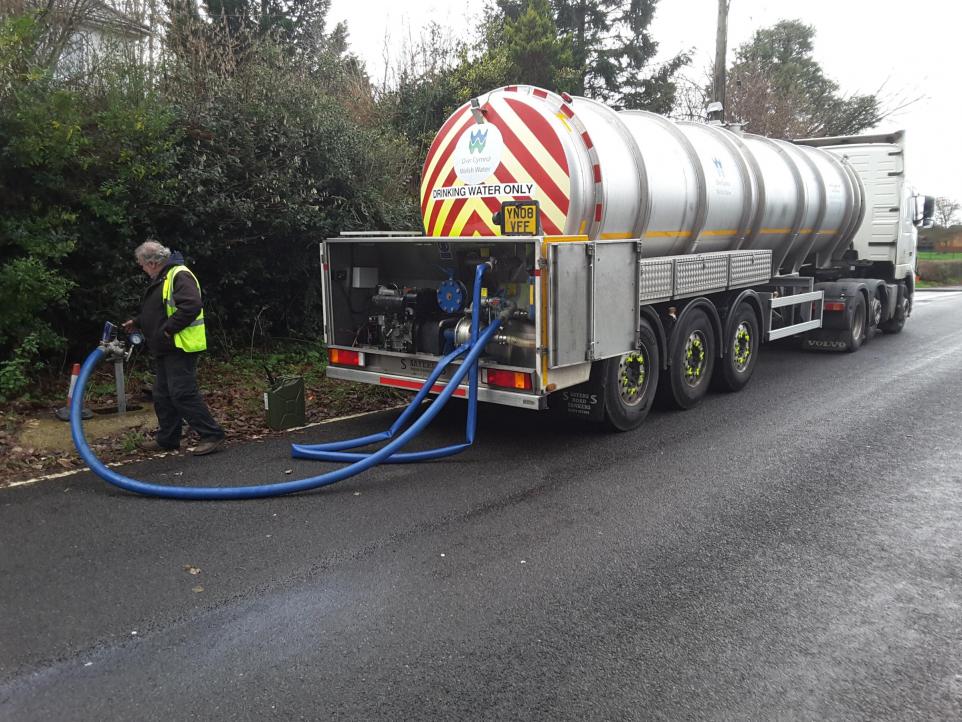Advertorial
The Ultimate Guide to Streamlining Your Business Expenses
Whether you need to reduce overhead, cut production costs, or simply find savings in your operating budget, the tips here will set you on the path toward increased profit margins and a healthier bottom line through prudent fiscal management.

In today’s competitive business landscape, managing expenses efficiently is critical to ensuring profitability and success. With rising costs across the board from raw materials to labour, businesses must find ways to streamline spending without compromising quality or output. This article provides an in-depth guide to analysing your business’s current expenses, identifying areas where fat can be trimmed, and implementing an effective cost reduction plan. Following the strategies outlined here will help you optimise your expenditure, redirect savings to growth initiatives, and build a leaner, more cost-efficient operational infrastructure. Whether you need to reduce overhead, cut production costs, or simply find savings in your operating budget, the tips here will set you on the path toward increased profit margins and a healthier bottom line through prudent fiscal management.
Identify and Analyse Your Expenses
The first critical step in reducing expenses is gaining a clear, comprehensive understanding of exactly where your money is going. Start by categorising all your business expenses into groups such as raw materials, labour, operations, facilities, utilities, supplies, and other. Look at each category closely, breaking down the specific costs involved. Analyse at least 3-5 years of past expenditures to identify trends and patterns in spending. Pinpoint the largest and most consistent expenses, as these are often prime areas for reduction. Speak with managers across departments to gain insight into current spending needs and identify any waste or inefficiencies in resource allocation. Maintaining thorough records of all recurring costs, performing competitive analysis, and determining appropriate benchmarks for comparison can aid in making cutback decisions. The goal is to evaluate all expenses critically through various lenses to determine where cuts will have the least impact on quality and output.
The first critical step in reducing expenses is gaining a clear, comprehensive understanding of exactly where your money is going. Start by categorising all your business expenses into groups such as raw materials, labour, operations, facilities, utilities, supplies, and other. Look at each category closely, breaking down the specific costs involved. Analyse at least 3-5 years of past expenditures to identify trends and patterns in spending. Pinpoint the largest and most consistent expenses, as these are often prime areas for reduction. Speak with managers across departments to gain insight into current spending needs and identify any waste or inefficiencies in resource allocation. Maintaining thorough records of all recurring costs, performing competitive analysis, and determining appropriate benchmarks for comparison can aid in making cutback decisions. The goal is to evaluate all expenses critically through various lenses to determine where cuts will have the least impact on quality and output.
Implementing a Cost-Reduction Plan
Once you’ve identified areas where expenses can be reduced, it’s time to implement a cost-reduction plan across your business. Begin by setting specific monetary goals for cutting costs in each department and category. Involve managers in creating budgets they must adhere to for labour, supplies, maintenance, and other controllable expenses. Provide training and institute policies that encourage frugal spending habits and accountability to these budgets. Set targets for milestone savings over specific periods, and track progress through financial reports and audits. Continuously monitor KPIs like production costs, utility bills, and operating overhead for evidence of improvement. Beyond cutting existing expenses, review standard business protocols to identify ways to increase efficiency, reuse resources, and reduce waste. Implementing these measures systematically while preserving quality and output takes discipline, but will yield multiplied savings over time.
Energy Efficiency as a Cost-Saving Strategy
An impactful way for most businesses to significantly cut costs is through improving energy efficiency. Review your utility bills and identify your largest expenses for electricity, gas, water, and other metered services. Research where you might be wasting resources through inefficient equipment, practices, or even building insulation. Compare business gas suppliers online to get a good understanding of business gas rates. Consider an energy audit to pinpoint problems. Invest in high-efficiency upgrades like LED lighting, automated climate control systems, and Energy Star certified appliances. Instruct employees on turning off unnecessary lights and equipment when not in use. Choose more sustainable supplies like recycled paper. Implementing thoughtful energy conservation and efficiency protocols can drastically reduce utility bills. The return on investment makes energy savings one of the most valuable cost-reduction strategies.
Embracing Technology for Cost Efficiency
Adopting new technologies that automate processes, improve productivity, and reduce waste can generate immense cost savings. Invest in software, machinery, and digital tools that allow you to maintain or increase output with less labour and resources. For example, automated supply chain and inventory management technologies minimise waste and overhead. Digital communication and project management tools increase productivity and efficiency without adding payroll. Move data storage and software to the cloud to reduce IT and equipment costs. Provide employees with current tech tools and training to enhance their productivity. Optimising manufacturing or service delivery with new technologies requires upfront investment but leads to ongoing savings from streamlined operations. An added benefit of tech upgrades is using saved revenue for other finance priorities, like R&D, marketing, or facilities improvement.
Optimising Employee Productivity
Your business’s labour costs can be optimised by ensuring employees work productively for all paid hours. Set clear objectives tied to financial goals and provide training to maximise efficiency. Cross-train staff in multiple functions so time can be allocated flexibly. Implement technologies that automate tasks so workers can focus on high-value activities. Offer incentives or rewards for exceeding key productivity metrics. Ensure staffing levels match workload, adjusting as needed rather than overstaffing. Enforce work schedules and breaks to minimise idle time. Check in with managers and staff regularly to address any productivity obstacles proactively. By assigning responsibilities thoughtfully, investing in worker development, and fostering an engaged, motivated workplace culture, you can optimise productivity and reduce associated labour costs.
Implementing Sustainable Practices to Save Money
Going green offers creative ways for businesses to cut costs through improved efficiency, waste reduction, and energy conservation. Source renewable energy to reduce utility bills. Install solar panels or buy carbon offsets to make operations more sustainable. Switch from disposable to reusable supplies to decrease materials purchasing. Set up recycling and composting programs to lower waste fees. Buy used equipment and office furniture when possible. Allow telecommuting and flexible schedules to optimise office space needs. Provide incentives for employees to use public transit or carpool. Growing consumer demand makes sustainability a competitive advantage as well. Promoting your efforts to customers can enhance your brand image. Implementing such initiatives may require some upfront investment but the long-term payoff makes going green a smart fiscal move.
Review and Revise Your Business Processes
Finally, taking a big picture look at your existing business processes and procedures can reveal additional ways to increase efficiency and reduce costs. Perform an objective audit of each department’s major workflows, tasks, and protocols. Identify areas of duplication where resources or efforts can be consolidated. Eliminate any practices that do not directly contribute value. Streamline or automate manual processes where possible. Clarify roles and responsibilities to avoid redundancy. Revise policies around purchasing, approvals, reporting, and other routines to optimise them. Standardise workflows across departments for consistency. Update processes continuously as new technologies or market factors present opportunities for improvement. By regularly reviewing and thoughtfully revising business processes, you can drive continuous improvement in cost efficiency outside of periodic budgeting cycles. Optimised workflows and smart processes enable lean, sustainable operations.
Final Thoughts
Reducing expenses requires an ongoing, concerted effort across all levels of an organisation. By thoroughly analysing expenditures, implementing budgets, leveraging technologies, optimising labour, and streamlining processes, businesses can achieve significant, sustainable cost reductions. The strategies outlined in this article provide an in-depth framework any manager can follow to build a culture of efficient, cost-conscious operations. While reducing vital resources like labour, materials, and facilities too aggressively can negatively impact growth and output, moderate cutbacks driven by waste elimination and optimisation will yield leaner, healthier profit margins. The keys are taking a systematic approach, tracking progress through detailed financial reporting, and soliciting regular input from staff on improvement opportunities. With some investment of time and effort, your business can transform into a highly efficient, agile organisation well positioned to weather challenging economic conditions and competitive pressures. The long-term benefits of cost reduction extend far beyond immediate expense trimming to build a foundation for ongoing success, value, and profitability.
Advertorial
Wales to seize ‘once-in-a-generation’ opportunity for water sector reform

WALES is set for a historic overhaul of how its water is managed, regulated and delivered, following the publication of the Independent Water Commission Report.

Deputy First Minister Huw Irranca-Davies told the Senedd on Tuesday (Oct 21) that the Welsh Government would act on the report’s findings, describing the reforms as a “once-in-a-generation opportunity” to build a fairer, more sustainable and transparent water system.
“This is a moment to do things differently – and to do them better,” he said. “Our current water system does not work as well as it should for people or for the environment. People are rightly worried about their water bills and the state of our waterways. That has to change. This is a golden opportunity to clean up our rivers and seas, deliver better value for Welsh bill-payers, and build a water system that’s accountable, transparent, and designed in Wales, for Wales.”
New independent regulator
Among the Commission’s main recommendations is the creation of a new, stand-alone economic regulator for water in Wales. The regulator would also take on water system planning functions, providing a more integrated and responsive approach to regulation.
The Welsh Government has confirmed it will move forward with this proposal, saying the new body will strengthen public confidence and support long-term investment in environmental protection and infrastructure.
A consultation will be launched later this year to shape the new regulatory model and ensure it reflects Welsh priorities.
Powers and accountability
The Deputy First Minister also announced that the Welsh Government will seek new powers for the Senedd. If agreed, Wales would, for the first time, be able to legislate independently for the water industry, aligning regulation and planning entirely within Welsh borders.
The reforms aim to set a clear national direction for water management — linking supply, resilience, and environmental goals with Wales’s wider commitments to public health and prosperity.
Moving away from competition
The proposed Welsh approach marks a shift from the competition-led model inherited before devolution. Instead, it would be based on sustainability, affordability and fairness — ensuring that long-term planning and accountability remain central.
To support a smooth transition, a shared plan will be developed with the UK Government, outlining the route towards the new system. Interim measures, including a Strategic Policy Statement to Ofwat and other regulators, will maintain stability during the changeover.
Mr Irranca-Davies added: “Reforming the water sector is a complex, long-term task — but it’s also an opportunity to create a better system and show what devolution can achieve. By working together — with the UK Government, regulators, water companies, and communities across Wales — we can build a water sector that delivers for our environment, our economy and our people for decades to come.”
Commenting, Welsh Conservative Shadow Cabinet Secretary for Climate Change and the Environment, Janet Finch-Saunders MS, said: “Since Labour came into power in Westminster, Environment Agency figures show that serious water pollution incidents have increased compared with the UK Conservative Government in 2023.
“Considering NRW has been run by Labour since its inception and the number of serious pollution incidents by Dŵr Cymru has tripled since 2016, I do not hold out much hope for this new regulator or the collaboration with the UK Labour Government.
“After 26 years of mismanaging waterways in Wales, a new regulator will not fix their inability to tackle water pollution in Wales and just like with UK Labour’s misguided energy plans, these plans will do nothing to stop water bill rises.”
The Welsh Government will publish its full vision for water reform later this year, inviting views from customers, businesses, regulators and the wider public.
Advertorial
Is Irishluck the Best Affiliate Site for Finding F1 Betting Sites?

The exhilarating sport of F1 draws more than 750 million fans—myself included—making it one of the most popular out there. Many of those who enjoy watching F1 cars speed by also like to heighten their experience by placing a bet on which car will be the first to see the chequered flag—it’s a great way to add extra suspense to those all-important pit stops and close overtakes.
One of the ways I like to make my life easier is by using an affiliate like Irishluck to find me the best F1 betting options—saving time and allowing me to get straight into the fun. You can’t just pick a random affiliate and decide to trust every recommendation they make though. It’s important to first conduct a little research to make sure they’re worth using.
What Do I Want to See From Irishluck?
There were a couple of factors (or clues) I was on the lookout for in this investigation; let’s take a look at them in more detail.
- Range of F1 Betting Sites—right out of the blocks I checked to see that Irishluck offered a wide choice of F1 betting sites with variety in terms of things like bonuses and payment methods.
- Quality of Sites—having loads of options is all good and dandy, but it’s even more important that they’re really carefully chosen. I wanted to see a strict selection process that considered things like customer service, payment methods, and bonuses.
- Helpfulness of Content—I carefully examined a wide sample of Irishluck’s reviews to see if they were up to par and clearly covered everything I wanted to know.
- Team Credibility—last, but definitely not least, I looked at the team behind Irishluck and whether they had the relevant experience I was looking for. I tend to look for concrete experience in terms of former roles and publications.
So, now that we know what I was looking for from Irishluck, let’s see how they compared. I gave each factor a mark out of five stars, depending on how well the comparison site performed; let’s get started!
Range of F1 Betting Sites—4.5/5 Stars ⭐️⭐️⭐️⭐️⭐️
It quite literally took me a matter of seconds to locate the F1 betting sites on offer at Irishluck, as they can be found under their individual section through the heading ‘Sports Betting Sites’. Right away, they offer 21 betting sites to choose from, and they included a really detailed toplist to help me pick the perfect one for me. They highlight the top features, best bonus, and expert rating of each site, so I could tell at a glance which looked to be the best option for what I was interested in.
The second thread to this factor was looking at the variety in the sites. I’m pleased to report they impressed in this category as well, with a good choice of bonuses. I was able to find all the sorts I would expect to see, like deposit bonus, free bets, and cashback. It was also good to see that the sites on Irishluck accept a wide range of payment methods—including cards, bank transfers, and e-wallets like PayPal, Skrill, and Neteller.
Why Did I Mark the Range at Irishluck Down Half a Star?
Now, this could be me being a bit greedy, but I would like to see a couple more options on offer at Irishluck in the future. While 21 sites is by no means awful, I’d still like to have a few more to choose from, just to make sure I can pick the one that completely meets all my criteria.
Quality of Sites—5/5 Stars ⭐️⭐️⭐️⭐️⭐️
When it comes to selecting their betting sites, I have absolutely no notes for Irishluck, as they already have an incredibly thorough process in place. They consider 13 separate factors, including things like payment methods, bonuses, customer service, and security.
Honestly, all of those are factors I would expect to see at a comparison site, but Irishluck also considers a few more niche things. The first of those is the signup process for a site. They look at whether opening an account with a site is overly complicated or long. As someone who has been suckered in by a flashy deal, only to have my signup scuppered by a really unnecessarily complicated process, it was great to see Irishluck take this into account.
How Does Irishluck Go Above and Beyond When Selecting Sites?
When you take a quick look at their process, it comes as little surprise that Irishluck have spent 12,960 hours analysing casinos. Their methods go way beyond any others I’ve seen, and they actually use statistical formulas to determine whether a site is worth recommending; That includes the likes of the Wilson Score Interval and Bayesian Averages—both of which look at the number of reviews as well as their star rating.
Helpfulness of Content—4.5/5 Stars ⭐️⭐️⭐️⭐️
The quality of the reviews surrounding the F1 betting sites available at Irishluck is second to none, and I was hugely impressed by the amount of research and detail that went into crafting them. I read a good sample of the F1 reviews and was pleased to see they mentioned absolutely everything I could want to know; whether I wanted more in-depth information on the payment options, bonuses, or security of a site, they had me covered.
Compared to other sites I’ve used in the past, Irishluck’s reviews are nowhere near as overwhelming or content-dense. Instead, I actually found them really easy to digest, and I think a lot of that is down to their use of things like lists and tables. One of the things I really enjoyed was that they walked me through how to claim a bonus or set up an account at a site step-by-step—making it much easier to understand.
Why Didn’t I Give Irishluck a Five for Content?
There’s only one real problem for me when it comes to the content available at Irishluck, which is that there aren’t reviews for all the betting sites yet. When I was scrolling through their toplist, I was disappointed to see that not all the options had an expert review linked. Given their high quality and how helpful I found them in guiding me towards the right site, that’s quite a big absence, and one I would like to see rectified soon.
Team Credibility—5/5 Stars ⭐️⭐️⭐️⭐️⭐️
The team behind Irishluck continued the theme of impressing me, as they have over 50 years of combined experience in the industry! It was obvious when reading their profiles that they all know exactly what they’re talking about, so I felt like I was in the best hands for recommendations.
Irishluck’s Standout Team Members
As their resident specialist, Siobhan Aslett was Irishluck’s standout team member when it came to sports betting. Her CV is stacked full of impressive experiences—including almost a decade in the industry and experience working at some of the biggest online betting sites in the business.
It was also clear that Siobhan knows her onions when it comes to different sports, given her Degree in Sports Nutrition from the University of Exeter. When I read her content, I felt like her knowledge was really clear but also well-balanced, with a care for bettors that made it refreshingly honest.
Is Irishluck the Place to Go to Find F1 Betting?
Irishluck certainly took pole position for me when it came to affiliate sites to find F1 betting at—putting on a strong display across all the factors I examined. To kick off, it was easy to find their options through their clear, individual sections. I also found their toplist really helpful in guiding me to the right site for me, and when I needed a little more information—or was just plain curious!—I just had to check out their comprehensive expert reviews to learn everything I needed to know.
Where Irishluck really kicks it into sixth gear, though, is with the expertise of their team, which is easily one of the most impressive I’ve ever evaluated. They have half a century worth of experience! That’s why, overall, I’ve awarded Irishluck a super impressive rating of 4.8 out of 5 stars, and I would have no hesitation in recommending it to other players!
Advertorial
Pembrokeshire couple open houseplant café in converted greenhouse

A FORMER Pembrokeshire dairy farmer and his wife have opened a new houseplant centre and botanical-themed coffee shop in Pembroke, supported by a £20,000 Start Up Loan.
Husband-and-wife duo Kristian (35) and Beckie Howell (31), both from Pembrokeshire, are behind Vine & Vibe, a new 6,000 sq ft indoor houseplant centre and café designed to bring an inclusive, wellbeing-focused space to the region’s retail and hospitality offering.
Housed in a converted commercial greenhouse, the venture is the result of both a personal and entrepreneurial journey. In 2017, Kristian sustained a life-changing spinal cord injury that ended his career in dairy farming and left him reliant on a wheelchair. The couple’s shared interest in gardening, sustainability, and mental wellbeing became the catalyst for launching their own business.

“After Kris’s accident, we had to completely rethink our future,” said Beckie. “Caring for houseplants gave me purpose, and for Kris, growing vegetables helped him reconnect with the land. Vine & Vibe grew from that shared passion, and now we’re turning it into something that can benefit others too.”
Vine & Vibe has been designed with accessibility in mind, including step-free access, wide walkways and low café tables. To help visitors plan their trip, the couple are launching a dedicated accessibility section on their website, complete with images and videos, so customers can decide for themselves if the space will work for their needs.
Renovating the disused greenhouse with reclaimed materials, the couple have undertaken much of the build themselves. The Start Up Loan funding has enabled them to kit out the café, invest in accessible furniture, stock their first plant collections, and bring in specialist trades where needed.



“We’ve worked hard to source ethically and locally wherever possible,” said Kristian. “Our coffee comes from Capital Roasters, just 1.5 miles away, and we’re working with them to develop our own flavour profile. The café will also serve seasonal drinks like yuzu lavender and strawberry basil iced lattes to make the experience unique.”
“The Start Up Loan gave us the platform to take our vision from idea to reality,” he added. “It’s been transformational.”
“Being on a low income and reliant on disability benefits meant that traditional lenders simply weren’t an option for us,” said Beckie. “We knew we had a strong idea and the determination to make it work, but we needed someone to take a chance on us. The Start Up Loan gave us that opportunity – not just with the funding, but providing the support and advice to help us understand cash flow and business planning too. Without it, Vine & Vibe wouldn’t be happening.”
Vine & Vibe stock a wide range of houseplants and botanical-themed homewares, and the coffee shop offers sweet treats and specialist drinks served in a lush, indoor tropical setting. Longer term, Beckie and Kris hope the business will become a go-to local hub for plant lovers and coffee drinkers alike – and an example of how thoughtful design can make spaces more welcoming to more people.
“Vine & Vibe is a great example of the power of entrepreneurial thinking in rural Wales,” said Jessica Phillips-Harris, Senior Manager for Wales at the British Business Bank. “Beckie and Kris are building something that’s sustainable, community-focused and rooted in their local area, and we’re proud to have supported them.”
Start Up Loans is a subsidiary of the UK’s economic development bank, British Business Bank. The Start Up Loans programme provides personal loans for business purposes of up to £25,000 at a 6% fixed interest rate per annum and offers free dedicated mentoring and support to each business.
-

 Crime1 day ago
Crime1 day agoMilford Haven man jailed after drunken attack on partner and police officers
-

 News4 days ago
News4 days agoDyfed-Powys Police launch major investigation after triple fatal crash
-

 Crime1 day ago
Crime1 day agoTeenager charged following rape allegation at Saundersfoot nightclub
-

 Crime2 days ago
Crime2 days agoMan charged with months of coercive control and assaults
-

 Crime3 days ago
Crime3 days agoMan sent to Crown Court over historic indecent assault allegations
-

 Crime5 days ago
Crime5 days agoMan spared jail after baseball bat incident in Milford Haven
-

 Crime3 days ago
Crime3 days agoMilford Haven man admits multiple offences after A477 incident
-

 Crime2 days ago
Crime2 days agoWoman ‘terrified in own home’ after ex breaches court order























